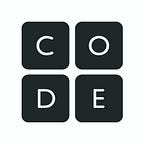University computer science finally surpasses its 2003 peak!
University CS graduates have set a new record, finally surpassing the number of degrees earned 14 years ago.
With a 15% increase in computer science graduates (49,291 bachelor’s degrees), 2015 had the largest number of CS graduates EVER! The previous high point was over a decade ago, in 2003.
Diversity shows improvement (but far from enough)
The number of women earning bachelor’s degrees in CS increased from 7,327 to 8,629, and their representation increased from 17.05% to 17.51%. And when looking at all levels of CS degree (bachelors, masters, doctoral), the representation of women increased from 20.78% to 22.09%.
The number of CS bachelor’s degrees earned by underrepresented minorities also increased, from 7,546 to 8,718; with a slight increase in representation from 17.56% to 17.69%.
We have a long way to go
This doesn’t mean our work is over. CS is still less than 3% of all bachelor’s degrees, and only 8% of all STEM degrees. Meanwhile, 71% of all STEM occupations are in computing, accounting for 16% of all new wages in the U.S.
Meanwhile, the number of women graduating with CS degrees is still only 2/3 of what it was in 2003. While it’s great to see improvement, women and underrepresented minorities are still grossly underrepresented in this foundational field.
The leading indicator: K-12 computer science is skyrocketing
K-12 computer science is the leading indicator of what happens in university: The College Board found that students that try AP computer science in high school are 6 times more likely to study CS in university; women are 10 times more likely; and underrepresented minorities are 7–8 times more likely (more info).
And in K-12 computer science, enrollment among youth has skyrocketed to the millions, while the high school AP course has sustained record growth and is poised to almost double with this year’s launch of the new AP CS Principles. As a result, interest in CS among students entering university is also seeing unprecedented growth.
The teacher-led movement for K-12 computer science continues, expanding teaching capacity and encouraging all students, particularly female and underrepresented minority students, to give computer science a try! Together we can change the face of computing.
Source data on university graduates in CS:
The chart for this blog was created by analyzing the 2015 NCES data. We wait until this data is available on the NSF’s WebCASPAR tool in order to filter for only public and non-profit universities; see the filters we used and our analysis of the data here.
